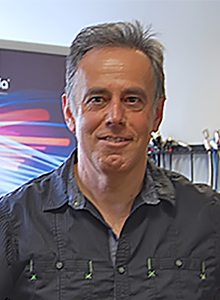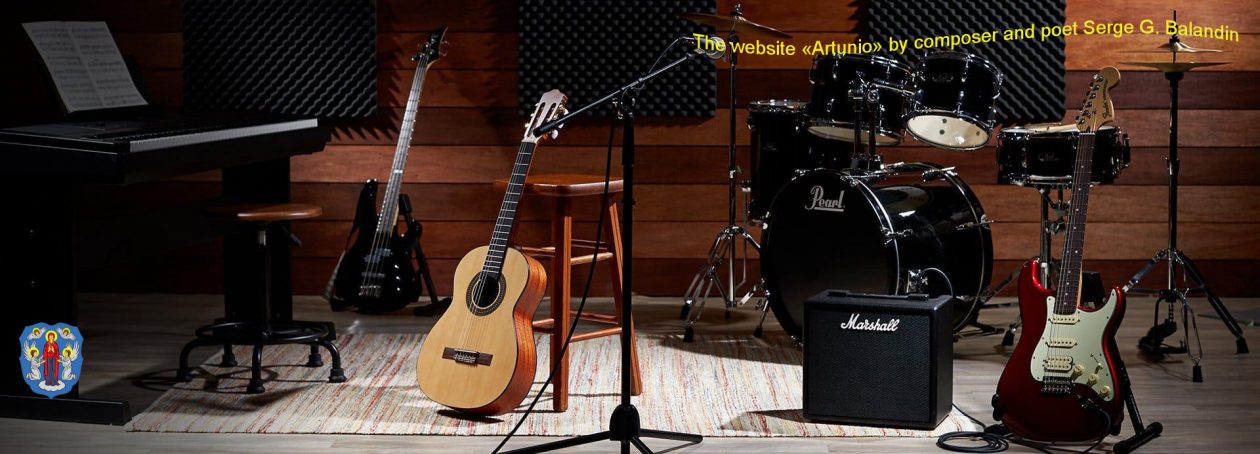
EMINENT PERSONS: DIETER DOPFER
Dieter Doepfer [original: DIETER DOPFER] or the father of the second synthesizer generation. He founded the «Doepfer Musikelektronik GmbH» in the German city of Greifelfing. The product range covers analog modular systems, MIDI controllers, MIDI hardware sequencers, MIDI-to-CV/Gate/Sync interfaces, MIDI master keyboards and other special MIDI equipment.
When Dieter was still studying physics, he played in a band and was involved in repairing music utility modules, such as distortion, Wah-Wah, phasers, flangers and others. Since the guitar was his basic musical instrument, he, along with the common effects, began to experiment with different kinds of filter circuits. He wanted his guitar sound to become as legendary as the sound produced by the American idol «Moog». At the first stage of his activity, Dieter was in dire need of money, so he earned his living as well as for his first designs by performing at weddings, parties and anywhere else.
His attempts to make the sound of his guitar through filters, phase shifters and synthesizer distortions were not particularly successful, he realized that he wanted to delve deeper into the issue. Fortunately, in the mid-70s, the electronics magazine called «Elektor» published the «Formant» modular synthesizer circuits. Each issue of the magazine was focused only on one of the modules: the keyboard, VCO, VCF, VCA, ADSR, LFO, etc. Therefore, Dieter decided to tackle the problem connected to his understanding of improving the sound of the synthesizer…
As soon as the version of «Formant» synthesizer was assembled, everyone wanted to expand its functions and capabilities straight away. Therefore, Doepfer began to develop and sell several formant-compatible modules, in particular, a sub-octave frequency divider, a voltage controlled phase shifter, voltage-controlled low-frequency oscillators, VU meters, system timers, voltage-controlled switches and joysticks. One drawback of «Formant» — it didn’t have a 24 dB filter. Dieter managed to get the official «Moog» service manual, and, having dived into details, he came up with the idea of how to restore his system. After that, Dieter released a successful modular system A100, which was accepted gratefully by such bands as «Kraftwerk» and others. The «Kraftwerk», which Dieter was always fond of, used to take on stage R2M (MIDI Ribbon Controller), but now the musicians prefer «Dark Energy». Having created a new navigation system for «Roboter», it became much more convenient for artists to control each step with the help of MAQ 16/3 sequencer, created in collaboration with Florian Schneider, who is no longer in the band. As Dieter admits, without Sibille Heller he was like without hands. She was the most important link between his product and customers. If he created the most fantastic instruments behind a closed door, then there was no use in doing that at all. Why making units for yourself? Sibille Heller was his guide. All Doepfer equipment is manufactured only in Germany. Its achievements and accomplishments can be described step by step, year by year, which would show the scope of work and discoveries of Doepfer in the synth sound industry that has enriched modern music: ♦ 1979 a voltage-controlled phaser module for the German modular synthesizer «Formant». ♦ 1995 analog modular system A-100. At the time of production, there were a dozen modules — all of them were in the format defined by Doepfer — 3U and 2HP, with cables featuring 3.5mm mini-jacks. This format was defined as the Eurorack standard and later it was used by other manufacturers. Today, A-100 has about 120 possible modules, and the Eurorack standard has become the most common in the world of modular synthesizers. ♦ 1997 MIDI pattern sequencer SCHALTWERK Doepfer products not only provide high quality sound, but are also very reliable, quite affordable costing a reasonable amount of money. The most popular works of Dieter Doepfer: • A-100 BS1 Basis-System 1 (basic modular system for working with A-100 without MIDI interface).
♦ 1980 polyphonic modular systems PMS (Quad-modules, Like Quad-VCO, Quad-VCF, etc.)
♦ 1982 Voice modular system (one synthesizer voice with 2 VCOs,2ADSR,1VCF,1VCA on one board 100x160mm, designed with CEM chips from Doug Curtis/USA)
♦ 1984 Sound Sampler (8 bit voltage controlled sampler with interface and sampling software for Commodore 64)
♦ 1985 Loop option, compander and synthesis software for sound sampler (FM, Fourier, Waveshaping and so on)
♦ 1986 MIDI-to-CV interface MCV1 (first version)
♦ 1987 Computer-controlled audio mixing console CCM with computer-controlled faders (VCAs) and filters (VCFs), interface and software for Commodore 64 and Atari ST
♦ 1989 simple MIDI master keyboard LMK1
♦ 1989 MIDI keyboard MMK2 (e.g. used by Kraftwerk live for the Pocket Calculator song)
♦ 1989 MIDI master keyboard controller MKC1/2 (for combination with LMK1)
♦ 1990 MIDI master keyboard LMK3 with piano touch simulation
♦ 1990 MIDI master keyboard LMK1V2 (improved version of LMK1)
♦ 1990 16 voice MIDI expander SX-16
♦ 1990 MIDI Bass pedal MBP1
♦ 1990 Drum to MIDI converter DMC-8
♦ 1990 universal MIDI out interface MONA
♦ 1991 2 manual MIDI keyboard K2B
♦ 1991 MIDI program change unit MPC128
♦ 1991 MIDI-to-Gate interface MTG128 with up to 128 Gate outputs controlled via MIDI
♦ 1991 MIDI-to-Switch interface MTS128 with up to 128 MIDI controlled electronic switches (e.g. as MIDI-In interface for any non-MIDI-keyboard)
♦ 1992 MIDI master keyboard series LMK1+/LMK2+/LMK4+ with real hammer mechanics
♦ 1992 GM compatible MIDI expander GMX-1
♦ 1992 MIDI analog sequencer MAQ16/3 (designed in cooperation with KRAFTWERK)
♦ 1993 MIDI controller dimmer pack MIDIM8 with 8 power outputs
♦ 1993 MIDI switchpack MTP8 with 8 power outputs
♦ 1993 MIDI volume foot controller MVP1
♦ 1994 MIDI master keyboard top model LMK4+
♦ 1994 MIDI glove MOGLI
♦ 1994 universal MIDI event generator MEG
♦ 1994 MIDI to relays interface MTR128 to control up to 128 relays via MIDI note on/off
♦ 1994 MIDI-to-SYNC interface MSY1
♦ 1995 monophonic analog MIDI synthesizer MS-404
♦ 1995 2 manual MIDI master keyboard TMK2
♦ 1997 MIDI-to-CV interface MCV4
♦ 1997 MIDI-to-SYNC interface MSY2
♦ 1998 MIDI fader box and pattern/analog sequencer REGELWERK
♦ 1998 MIDI Keyboard PK88 (control keyboard especially for piano expanders)
♦ 1998 MIDI-to-CV/Gate interface MCV24 (24 CV/Gate outputs)
♦ 2006 Thru-Zero Quadrature VCO
♦ 2006 30/60dB Switched Capacitor Filter
♦ 2006 A-100 Keyboard/Sequencer
♦ 2010 Dark Energy Mono Synth
♦ 2011 Dark Time Analog Sequencer
♦ 2012 Dark Energy II Mono Synth
• A-100 BS1 Basis-System 2 (identical to BS1, but with MIDI interface).
• A-100 BSM Mini-System (minimum practical configuration A100).
• A-100 modular systems (modular system).
• MCV4 MIDI-CV converter (budget MIDI-to-CV interface).
• R2M Ribbon Controller (tape controller for MIDI and CV/GATE at the same time).
• MAQ16 / 3 Analogsequencer V3.4 (analog MIDI and CV/GATE sequencer).
• Mono synthesizers «Dark Energy»
Serge G. Balandin
Published: 17:30 | 10.06.2016
Views: 175
